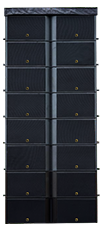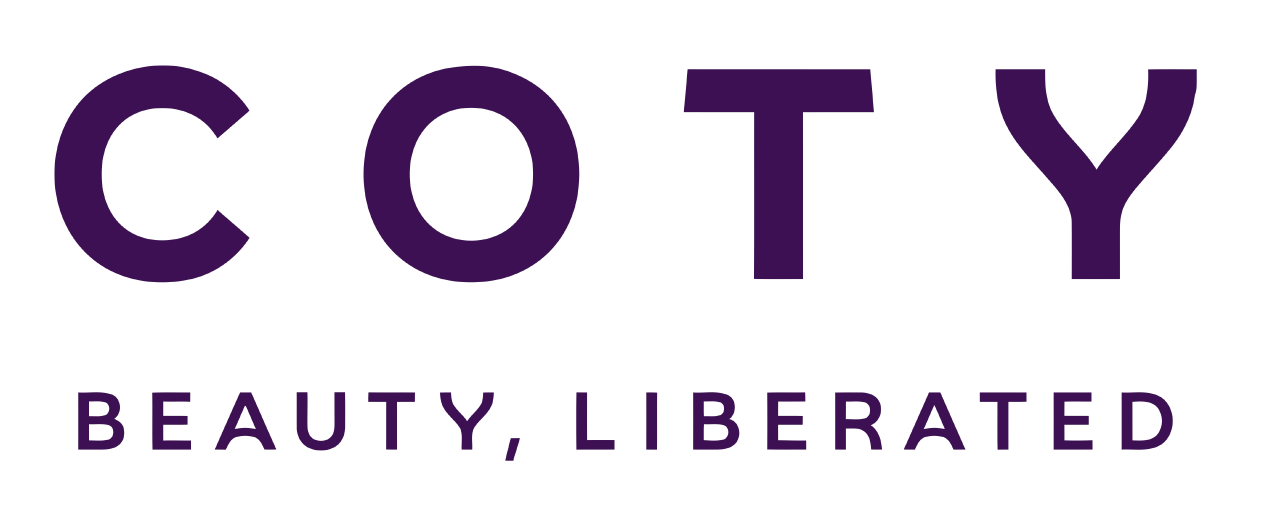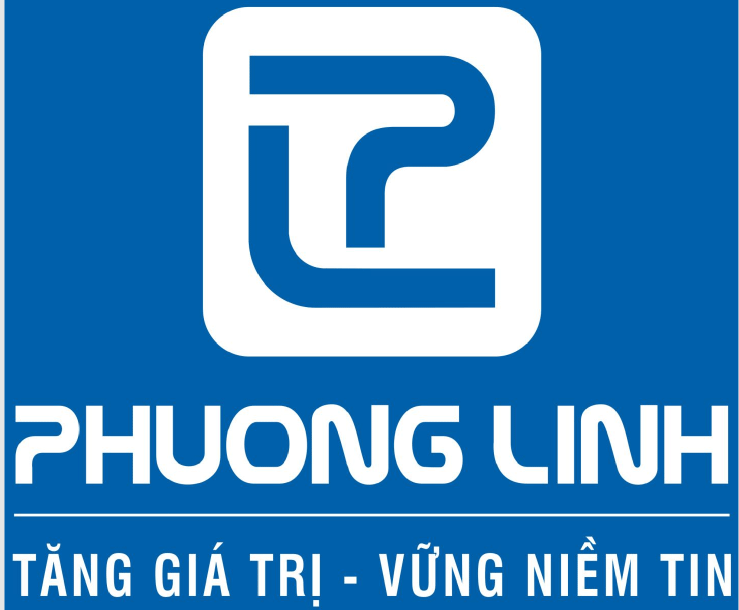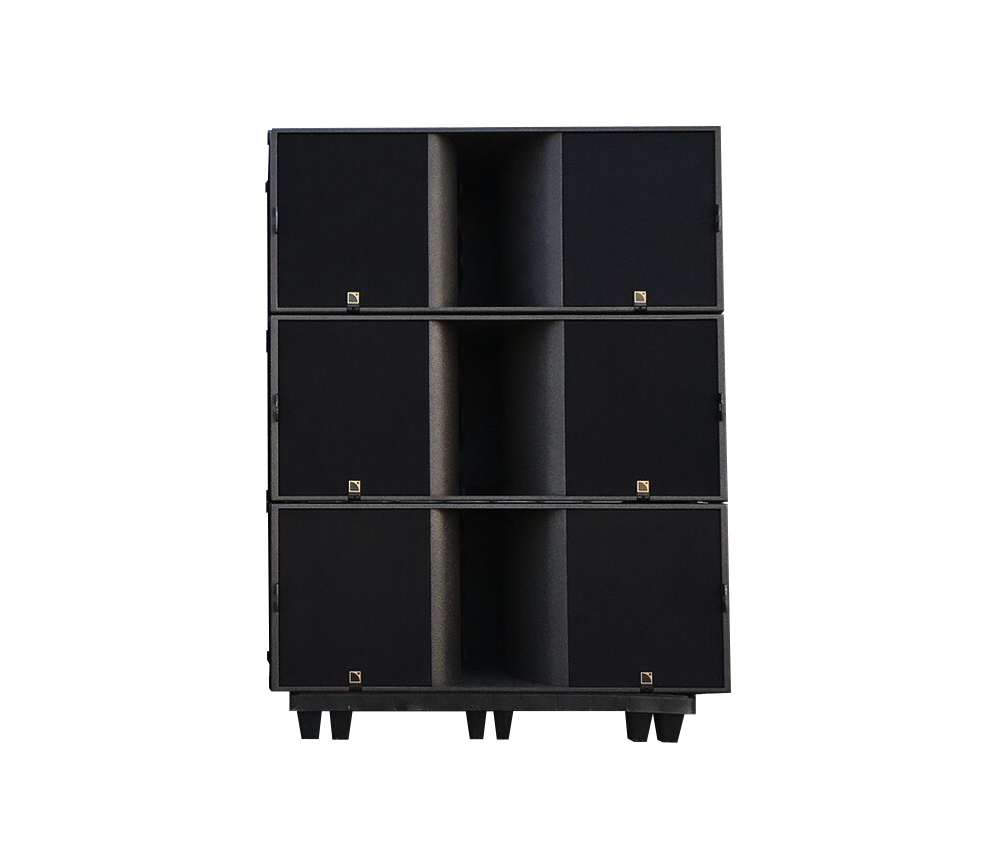LED display brightness: What you need to know
Jan 14, 2025
Brightness is a defining factor in the performance of LED displays, shaping how well your content stands out in different environments. Whether it’s an indoor event or an outdoor advertising campaign, the right brightness level ensures optimal visibility and audience engagement.
In this article, we’ll explore everything you need to know about LED display brightness and how to make it work for your needs.
Overview of LED screen brightness
LED screen brightness is one of the most critical factors influencing the effectiveness of digital displays, particularly in environments with varying lighting conditions. Whether used indoors or outdoors, ensuring the right brightness level can significantly impact visibility, audience engagement, and overall user experience.
What is brightness and why is it important?
Brightness refers to the amount of light emitted by an LED screen, typically measured in nits (candelas per square meter). It determines how well the display can be seen, especially in challenging lighting environments like direct sunlight or dimly lit rooms.
High brightness is crucial for outdoor displays, such as billboards or signage, to ensure content remains clear and legible despite natural light interference. On the other hand, indoor displays require a balanced level of brightness to avoid glare or discomfort to viewers.
The importance of LED brightness goes beyond visibility. It affects energy consumption, screen longevity, and the overall impact of your display. Overly bright screens can lead to unnecessary energy use and faster degradation of components, while dim screens may fail to capture attention effectively. Balancing brightness optimizes performance and enhances the user experience.

What is LED display brightness and why is it important?
How to measure LED screen brightness?
Measuring LED screen brightness involves using specialized tools like luminance meters or photometers to assess the light intensity emitted from the screen's surface. Here’s a simplified breakdown of how it works:
Luminance measurement in nits
The brightness of an LED screen is measured in "nits," a unit that indicates the amount of light the screen emits over a specific area (one square meter). Essentially, the higher the number of nits, the brighter the screen will appear.
>> Read more: How to Calculate the Number of LEDs for a Video Wall
For outdoor LED screens, brightness levels usually range from 4,500 to 7,500 nits. This high level of brightness ensures that the screen remains visible even in direct sunlight, where natural light could otherwise overpower the display. For example, an LED billboard placed on a busy street during the day needs high brightness so that viewers can see the content from a distance.
In contrast, indoor LED screens typically have brightness levels ranging from 300 to 1,000 nits. Since these screens are used in controlled environments with less ambient light (like conference rooms or shopping malls), they don’t need to be as bright. A lower brightness level not only provides a comfortable viewing experience but also helps conserve energy and extends the lifespan of the screen.
Impact of ambient light
The brightness of an LED screen is not just about how much light it emits; it also depends heavily on the lighting conditions of the environment where the screen is placed. This is referred to as ambient lighting, which is the natural or artificial light already present in the surroundings.
In outdoor settings, such as busy streets or stadiums, there is usually a lot of ambient light, especially during the daytime when sunlight is at its peak. To ensure the content on the LED screen remains visible and clear, the screen needs a much higher brightness level. Without sufficient brightness, the screen may appear washed out or completely invisible in direct sunlight.
On the other hand, indoor environments, like offices, conference rooms, or shopping malls, generally have controlled lighting with minimal variations. In these LED Wall settings, the brightness of the LED screen doesn’t need to be as high because the ambient light is weaker and more predictable. Using excessively bright screens indoors can cause discomfort to viewers, create unnecessary glare, and waste energy.
By carefully adjusting the screen's brightness to match the ambient lighting, you can achieve two key benefits:
- Optimal visibility: Ensuring that the screen’s content is easily seen, regardless of the environment.
- Energy efficiency: Reducing power consumption by avoiding excessively bright settings in low-light environments.
Factors affecting LED screen brightness
LED screen brightness is not solely determined by the amount of light the display emits; it also depends on various technical and structural factors. These elements directly impact how efficiently the screen performs and how well it adapts to different lighting conditions.
LED type
The type of LEDs used in a screen is one of the most crucial factors influencing its brightness. Different types of LEDs are designed for specific purposes, ensuring the screen meets the requirements of its environment.
- High-brightness LEDs: These LEDs are specifically engineered to emit intense light and can achieve brightness levels of up to 10,000 nits or more. This makes them perfect for outdoor displays, such as billboards or stadium screens, where they need to remain visible even in direct sunlight. Without these high-performance LEDs, outdoor screens would look washed out or nearly invisible during the day.
- Standard LEDs: Designed for indoor screens, these LEDs provide significantly lower brightness, typically ranging between 300 to 1,000 nits. Excessive brightness is unnecessary indoors, as controlled lighting conditions ensure the screen’s visibility without straining the viewer's eyes.
Additionally, the quality of the LED diodes is a major factor. Premium-grade LEDs deliver consistent brightness levels, better energy efficiency, and longer durability. In contrast, lower-grade LEDs might exhibit uneven light output, degrade faster, and struggle to maintain adequate brightness over time. This difference in quality directly affects both the screen’s performance and its lifespan.

High-brightness LEDs: Designed to shine under the sun
IC LED driver
The IC driver (LED driver integrated circuit) is a vital component that directly influences the brightness and overall performance of an LED screen. Essentially, the IC driver regulates the flow of electrical current to each LED pixel, controlling how much light it emits. This precise control is what enables LED screens to display consistent brightness across the entire screen, ensuring that no areas appear dimmer or brighter than others.
High-quality IC drivers are particularly important because they deliver reliable current regulation, allowing the screen to maintain uniform brightness and produce vibrant colors. These advanced drivers also support higher refresh rates, ensuring smooth motion in videos or animations, which enhances the overall viewing experience.
Conversely, poor-quality IC drivers can lead to issues such as uneven brightness, flickering, or a loss of sharpness, especially in screens with high resolutions where accuracy is crucial.
Additionally, the efficiency of the IC driver plays a significant role in how well the screen performs under challenging conditions. For example, high ambient temperatures or prolonged usage can strain the system. A good IC driver helps the screen maintain optimal brightness and stability in such situations, ensuring durability and consistent performance over time.
By ensuring that the IC driver is of high quality, manufacturers can create LED screens that deliver better visual experiences, are more reliable, and are capable of adapting to a variety of environmental conditions.
Screen construction
The overall design and construction of an LED screenplay a crucial role in managing and optimizing brightness levels. Several structural and technical elements contribute to how effectively the screen performs under various conditions.
One important factor is pixel pitch, which refers to the distance between individual LED pixels. Screens with a smaller pixel pitch have higher resolutions, making them ideal for close-up viewing, but they often require more LEDs to achieve comparable brightness levels.
This can result in increased power consumption. On the other hand, screens with a larger pixel pitch, typically used outdoors, can achieve greater brightness using fewer LEDs, making them more energy-efficient for long-distance viewing.
Another key aspect is the cabinet design. Effective ventilation and heat dissipation mechanisms are essential to maintaining consistent brightness. When the components, such as LEDs and IC drivers, operate in a well-cooled environment, their performance remains stable over time, and issues like brightness degradation due to overheating are minimized.
Additionally, optical enhancements are often incorporated to boost the screen's brightness and ensure uniformity. Features like specialized lenses or anti-glare coatings enhance light projection and clarity, allowing the display to stay vibrant and sharp even in difficult lighting conditions, such as direct sunlight or dim indoor environments.

Key structural features impacting LED screen brightness
How to control LED screen brightness
Controlling LED screen brightness is essential not only for ensuring optimal visibility but also for preserving energy efficiency and extending the lifespan of the screen. With the right approach, LED screens can adapt to different environments, lighting conditions, and viewing needs.
Automatic brightness adjustment
Modern LED screens often come equipped with light sensors or ambient light detectors, which are designed to automatically adjust the screen's brightness based on the surrounding environment. This technology is especially crucial for outdoor displays, which need to combat direct sunlight.
When the ambient light increases, such as during the day or in bright conditions, the sensor increases the brightness to maintain optimal visibility, ensuring that the screen remains easily readable.
In contrast, when ambient light decreases, such as at night or in dim indoor settings, the screen’s brightness automatically lowers to prevent excessive glare and reduce eye strain.
This automatic adjustment not only enhances the viewing experience but also provides significant energy savings. By reducing the brightness when it's not needed, energy consumption is minimized, which also reduces the strain on the LEDs, thus prolonging their lifespan.
Additionally, this system ensures that the screen is always operating at its most efficient level, whether it’s used for outdoor billboards, stadium screens, or indoor displays. Some screens even offer smart features that allow for customization, where users can set specific brightness thresholds for different times of day, making the display even more adaptable to changing conditions.

LED screen automatically adjusts brightness
Manual brightness settings
While automatic brightness adjustment is useful for many situations, there are times when manual control is necessary. For example, in controlled indoor environments like conference rooms, retail spaces, or exhibition halls, where lighting conditions tend to be more stable, manual brightness adjustment offers precision and flexibility.
Through the screen’s software interface or an external controller, users can fine-tune the brightness to suit the specific needs of the space. For instance, in a retail setting, a business might prefer higher brightness to attract attention to the display, while a conference room may require lower brightness to ensure the content is clear without being too harsh on the eyes.
Manual control gives users the freedom to adjust the screen’s brightness based on specific factors such as presentation style, content type, or ambient lighting, without relying on sensors.
Moreover, many modern LED screens allow for the creation of custom brightness profiles that can be stored and activated depending on the event or time of day. For example, during a morning meeting, a lower brightness profile could be used, while in the afternoon, the display could automatically switch to a higher brightness setting.
PWM (Pulse Width Modulation) technology
Pulse Width Modulation (PWM) is a technique commonly used in LED screens to adjust brightness levels with exceptional precision. PWM works by controlling the amount of time the LEDs are switched on and off within a given cycle. The longer the LEDs are on, the brighter the screen appears. By adjusting the "on" time relative to the "off" time, PWM creates the appearance of dimming or brightening the screen without altering the actual power supply directly.
One of the significant benefits of PWM is its ability to provide smooth brightness control, especially at lower brightness levels, without causing flickering, which could be distracting or harmful to viewers over time.
This is especially important in environments like offices or public spaces, where flickering could lead to headaches or discomfort. PWM technology ensures that brightness remains consistent across the screen, preserving the quality and clarity of the visuals, even when the brightness is reduced.
However, while PWM is effective in controlling brightness, it can be a bit more energy-intensive compared to other methods of dimming. This is because the rapid switching of LEDs requires more processing power. High-quality drivers and ICs are essential in maintaining the balance between brightness and energy efficiency when using PWM, ensuring that the screen delivers the best performance while consuming minimal power.
Current regulation
Current regulation is another critical aspect of controlling LED brightness, as it directly affects the intensity of the light produced by each LED. By adjusting the amount of electrical current supplied to the LEDs, the screen’s brightness can be either increased or decreased. Increasing the current results in a brighter screen, while decreasing the current leads to lower brightness levels.
This method of brightness control is typically employed in screens that require a high degree of stability in their performance. The key challenge with current regulation is to ensure that the LEDs are not overdriven, which can lead to overheating, premature wear, and a decrease in overall screen longevity.
For this reason, high-quality IC drivers and power management systems are crucial. They ensure that the current supplied to the LEDs is precisely controlled, preventing damage and maintaining the desired brightness level without compromising the lifespan of the screen.

Current regulation is another critical aspect of controlling LED brightness
Preset modes
Many LED screens come with preset brightness modes, which allow users to easily select predefined settings optimized for specific environments or usage scenarios. These presets are particularly convenient for users who need to adjust brightness quickly and consistently without manual fine-tuning. Some common preset modes include “Daylight Mode”, “Night Mode”, and “Eco Mode”.
Daylight Mode is designed for bright, outdoor environments where high brightness is needed to combat sunlight. It maximizes the screen’s light output for visibility in full daylight. Night Mode, on the other hand, is used in low-light environments where reduced brightness ensures a comfortable viewing experience without causing glare or eyestrain.
Eco Mode adjusts the brightness to the lowest level possible while maintaining image clarity, which can significantly reduce energy consumption in settings like office displays or digital signage in low-traffic areas.
Recommended practical brightness levels
Choosing the right brightness level for an LED screen is critical to ensuring optimal visibility and a comfortable viewing experience. While technical capabilities allow screens to reach impressive brightness levels, practical use often requires balancing brightness with energy efficiency, viewer comfort, and the environment in which the screen is located. Below are recommended brightness levels for various applications, explained in detail to help you make informed decisions.
Outdoor LED screens
- Typical range: 4,500 to 7,500 nits, depending on the location and application.
- When to choose higher brightness: Displays in locations with strong, direct sunlight - such as highways, open plazas, or sports stadiums - benefit from brightness levels closer to 7,500 nits or higher. This ensures the content remains clear even in the brightest midday conditions.
- Moderate brightness needs: For outdoor displays in shaded areas or locations with less intense sunlight, such as urban streets with tall buildings or partially covered arenas, a brightness level of around 5,000 nits is often sufficient.
Importantly, overly bright screens at night can cause glare or light pollution. To address this, outdoor screens should incorporate automatic brightness adjustment features, reducing brightness in darker settings to maintain viewer comfort and comply with local regulations.

Outdoor LED screens
Indoor LED screens
- Typical range: 300 to 1,000 nits.
- Lower brightness for close viewing: Displays in conference rooms, retail stores, or office environments, where viewers are positioned close to the screen, perform well with brightness levels between 300 and 500 nits. This minimizes eye strain while maintaining clarity and color accuracy.
- Higher brightness for large spaces: In larger venues like shopping malls, exhibition centers, or auditoriums, brightness levels between 800 and 1,000 nits may be necessary to ensure visibility from a distance, particularly under strong indoor lighting.
For indoor applications, it's also vital to consider factors like color accuracy and contrast ratio, which can be affected if brightness is set too high. The goal is to achieve a balanced display that complements the ambient light without overpowering it.
Specialized environments
Certain applications require unique brightness considerations, tailored to the specific use case:
- Digital billboards: These displays, often located at high-traffic intersections, require 5,000 to 8,000 nits during the day for maximum impact. At night, brightness should automatically drop to 300–500 nits to avoid dazzling drivers or passersby.
- Control rooms and broadcast studios: These environments demand highly consistent and low-glare displays, often requiring brightness levels of 250 to 400 nits. Stability and color precision are more critical than sheer brightness.
- Retail window displays: For screens placed in storefront windows, brightness levels of 2,000 to 4,000 nits are typically ideal. This ensures content remains visible despite reflections or sunlight streaming through the glass.
- Sports arenas and concert venues: LED screens in these settings need to deliver high brightness, typically between 6,000 and 8,000 nits, to accommodate intense lighting effects and ensure visibility for large audiences under varied lighting conditions.
While higher brightness is sometimes necessary, it’s important to remember that increased brightness often results in greater energy consumption. Excessively bright screens may also shorten the lifespan of the LEDs. To strike a balance:
- Use automatic brightness adjustment to match the screen’s brightness to the ambient light.
- Avoid operating screens at maximum brightness unless necessary.
- Opt for high-quality LEDs and IC drivers that deliver efficient light output with minimal energy loss.
Issues caused by excessive LED brightness
While it may seem like brighter is always better when it comes to LED screens, excessive brightness can lead to a range of issues, both for the display itself and for its viewers.
Eye strain and discomfort
Excessive brightness on LED screens can cause significant eye strain and discomfort. The intense light can create glare, especially in controlled indoor environments, making it difficult for viewers to focus. Over time, this can lead to eye fatigue, dryness, and irritation.
For some individuals, overly bright screens - particularly in dark rooms - may even trigger headaches or migraines. To prevent these issues, it's important to adjust the brightness based on the surrounding light and viewing distance. Using automatic brightness adjustment features can help minimize glare and enhance viewing comfort.

Excessive brightness on LED screens can cause significant eye strain and discomfort
Increased power consumption
Excessive brightness on LED screens not only affects the viewing experience but also leads to higher energy consumption. Running a screen at maximum brightness increases power usage, which can significantly raise electricity costs, especially in commercial and public spaces.
Additionally, the higher energy consumption contributes to a larger carbon footprint. To reduce waste and minimize environmental impact, adjusting the brightness based on ambient lighting and usage patterns is an effective solution that maintains visibility while promoting energy efficiency.
>> Discover more: How Much Does an LED Video Wall Cost?
Shortened lifespan of LEDs
Setting an LED screen's brightness too high can shorten its lifespan. Running the screen at full brightness causes the diodes to degrade faster, leading to dimming over time and requiring more frequent repairs or replacements.
Additionally, excessive brightness generates more heat, which can damage internal components like LEDs and IC drivers. Prolonged exposure to high temperatures may result in screen failure or reduced performance. To extend the screen’s life, it’s important to avoid maximum brightness for long periods and ensure proper cooling and ventilation.
Light pollution
Excessive LED brightness, especially in outdoor settings, can contribute to light pollution, disrupting the natural night environment. Bright screens in public spaces may disturb nearby residents and pedestrians, affecting sleep cycles, wildlife, and the atmosphere of the area.
Many cities have regulations that limit the brightness of outdoor screens to reduce their environmental impact. Exceeding these limits can result in fines or costly adjustments. By controlling brightness, businesses can help prevent light pollution and stay in compliance with local laws, ensuring a positive impact on both the community and the environment.
Poor color accuracy and contrast
Setting an LED screen too bright can negatively affect color accuracy and contrast. Excessive brightness may cause colors to look washed out, as the intense light overpowers the natural hues, resulting in a less vibrant display.
Additionally, high brightness can make it difficult to see details in darker areas, as bright spots become overly illuminated while darker sections lack proper contrast, making the content appear flat. To maintain rich colors and sharp contrast, it's important to adjust the brightness according to the content and environment.

Poor color accuracy and contrast
In conclusion, understanding LED display brightness is essential for ensuring optimal performance, visibility, and energy efficiency. Whether for outdoor or indoor use, it's important to find the right balance to avoid issues like eye strain, excessive power consumption, or poor color accuracy. By adjusting the brightness based on the environment and usage, you can enhance the overall viewing experience.
For those in need of high-quality LED displays, AV Vietnam offers LED wall rental services tailored to your specific needs, ensuring the best possible display quality for any event.






